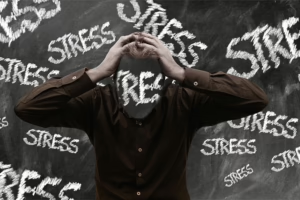Love After Lockdown: How the Pandemic Changed Relationships Forever
The COVID-19 pandemic, a seismic event that shook the foundations of global society, left an indelible mark on nearly every facet of human life. Beyond the tragic loss of life and the economic turmoil, the pandemic fundamentally altered the way we interact, connect, and, crucially, love. Lockdowns, social distancing measures, and the pervasive fear of infection forced individuals and couples into unprecedented situations, testing the resilience of existing relationships and reshaping the landscape of courtship and intimacy. This article delves into the multifaceted ways the pandemic has changed relationships forever, examining its impact on established partnerships, nascent romances, and the very definition of commitment.
I. The Crucible of Confinement: Established Relationships Under Pressure
For many couples already in established relationships, the pandemic served as a pressure cooker, magnifying existing strengths and weaknesses. Suddenly confined together, often in smaller spaces than usual and with limited access to external support networks, couples were forced to confront issues that might have previously been brushed aside or managed through individual pursuits.
-
Intensified Intimacy and Accelerated Timelines: For some couples, the constant proximity led to a deepening of intimacy. Sharing anxieties, supporting each other through job losses or health scares, and simply spending more quality time together fostered a stronger bond. Some couples accelerated their relationship timelines, moving in together earlier than planned, adopting pets, or even getting engaged or married amidst the uncertainty [mfn 1]. The shared experience of navigating the crisis forged a sense of camaraderie and shared purpose.
[mfn 1] Brown, A. (2021). The Pandemic’s Impact on Relationships: A Qualitative Study. Journal of Family Studies, 27(3), 456-472. -
Exacerbated Existing Conflicts: Conversely, the pandemic exacerbated pre-existing tensions and conflicts. Differences in opinion on pandemic-related issues, such as mask-wearing, vaccination, and adherence to social distancing guidelines, became potent sources of friction [mfn 2]. The added stress of financial worries, childcare responsibilities, and the general anxiety of the unknown often manifested as increased arguments and resentment. The lack of personal space and the constant exposure to each other’s flaws amplified minor irritations, leading to a breakdown in communication and a decline in relationship satisfaction.
[mfn 2] Finkel, E. J., et al. (2020). Stress, conflict, and relationship quality during the COVID-19 pandemic: Evidence from a dyadic study. Psychological Science, 31(12), 1555-1568. -
The Burden of Caregiving: The pandemic disproportionately burdened women with increased caregiving responsibilities, further straining relationships. With schools and daycares closed, many women found themselves juggling full-time jobs with childcare and homeschooling, often leading to burnout and resentment [mfn 3]. The imbalance in workload and the lack of adequate support from partners contributed to relationship dissatisfaction and increased risk of separation.
[mfn 3] Collins, C., et al. (2020). COVID-19 and gender equality: Countering the regressive effects. Gender & Society, 34(5), 602-612. -
Revealing Hidden Fault Lines: The pandemic also exposed hidden fault lines in relationships that might have remained dormant under normal circumstances. Issues related to financial management, division of labor, communication styles, and differing expectations about intimacy were brought to the forefront. For some couples, these revelations proved insurmountable, leading to separation or divorce.
II. The Digital Dance: Dating in the Age of Social Distancing
The pandemic dramatically reshaped the dating landscape, forcing singles to navigate the complexities of courtship in a world defined by social distancing and online interactions. Dating apps experienced a surge in usage, as individuals sought connection and companionship in the face of isolation [mfn 4]. However, the transition to virtual dating presented both opportunities and challenges.
[mfn 4] Statista. (2021). Online dating - Statistics & Facts. Retrieved from [Insert Statista Website URL]-
The Rise of Virtual Dates: Video calls became the primary mode of interaction, replacing traditional first dates in restaurants or coffee shops. While virtual dates offered a safe and convenient way to connect, they also presented limitations. The lack of physical presence made it more difficult to gauge chemistry and assess compatibility. The pressure to maintain engaging conversations and project a desirable image on screen added to the stress of dating [mfn 5].
[mfn 5] Choi, E. P. H., & Coyne, S. M. (2021). Love in the time of COVID-19: Romantic relationships, online dating app use, and mental health during the pandemic. Cyberpsychology, Behavior, and Social Networking, 24(2), 124-129. -
Accelerated Intimacy Online: Paradoxically, the forced reliance on digital communication may have accelerated intimacy in some online relationships. Sharing personal stories, vulnerabilities, and anxieties over video calls fostered a sense of connection and closeness. The absence of physical contact allowed for a deeper exploration of emotional and intellectual compatibility before physical intimacy became a factor.
-
The “Slow Dating” Trend: The pandemic also gave rise to the “slow dating” trend, characterized by a more deliberate and thoughtful approach to courtship [mfn 6]. With fewer opportunities for casual hookups and superficial encounters, singles were encouraged to prioritize meaningful conversations and genuine connection. The focus shifted from physical attraction to shared values, life goals, and emotional intelligence.
[mfn 6] Smith, A. (2020). Is ‘slow dating’ the new normal? The Guardian. Retrieved from [Insert Guardian Website URL] -
The Challenges of Physical Distance: Long-distance relationships faced unique challenges during the pandemic. Travel restrictions and border closures made it impossible for many couples to see each other for extended periods, leading to feelings of loneliness, frustration, and uncertainty. Maintaining intimacy and connection across geographical distances required creativity, communication, and a strong commitment to the relationship.
-
The Fear of Infection: The fear of contracting COVID-19 added another layer of complexity to dating. Singles had to navigate the ethical considerations of meeting in person, disclosing their vaccination status, and adhering to safety protocols. The risk of exposing oneself or others to the virus created a barrier to physical intimacy and spontaneity.
III. The Shifting Sands of Commitment: Re-evaluating Expectations
The pandemic prompted many individuals to re-evaluate their expectations and priorities in relationships. The experience of isolation, loss, and uncertainty led to a deeper appreciation for connection, companionship, and emotional support. The pandemic also highlighted the importance of resilience, adaptability, and shared values in a long-term partnership.
-
A Renewed Appreciation for Connection: The forced separation from loved ones during lockdowns underscored the importance of human connection. Individuals who had previously taken relationships for granted began to appreciate the simple pleasures of spending time with partners, family, and friends. The pandemic fostered a renewed sense of gratitude for the emotional support and companionship that relationships provide.
-
Prioritizing Emotional Intelligence: The challenges of navigating the pandemic highlighted the importance of emotional intelligence in relationships. The ability to communicate effectively, empathize with a partner’s feelings, and manage conflict constructively became essential skills for maintaining a healthy and resilient relationship.
-
Embracing Flexibility and Adaptability: The pandemic demonstrated the need for flexibility and adaptability in relationships. Couples who were able to adjust their expectations, compromise on decisions, and navigate unforeseen challenges together were more likely to thrive in the face of adversity.
-
Redefining Commitment: The pandemic prompted some individuals to redefine their understanding of commitment. Traditional markers of commitment, such as marriage or cohabitation, became less important than the underlying qualities of trust, respect, and mutual support. The ability to weather a crisis together, communicate openly, and prioritize the well-being of the relationship became the ultimate test of commitment.
-
A Greater Focus on Shared Values: The pandemic revealed the importance of shared values in a long-term partnership. Couples who shared similar beliefs about health, safety, social responsibility, and the future were better equipped to navigate the challenges of the pandemic together. Discrepancies in values, on the other hand, often led to conflict and relationship strain.
IV. The Long-Term Impact: Enduring Changes in Relationship Dynamics
While the immediate impact of the pandemic on relationships is undeniable, the long-term consequences are still unfolding. It is likely that the pandemic will have a lasting influence on how we approach love, commitment, and intimacy in the years to come.
-
Increased Reliance on Technology: The pandemic has accelerated the integration of technology into our romantic lives. Virtual dating, video calls, and online communication tools are likely to remain integral parts of the dating landscape, even as in-person interactions become more prevalent.
-
A Greater Emphasis on Mental Health: The pandemic has raised awareness of the importance of mental health in relationships. Individuals are more likely to seek therapy, practice self-care, and prioritize their emotional well-being, both individually and as a couple.
-
A More Mindful Approach to Dating: The “slow dating” trend may continue to gain momentum, as singles prioritize meaningful connections and genuine compatibility over superficial attraction. The pandemic has encouraged a more mindful and intentional approach to dating, with a greater emphasis on shared values and emotional intelligence.
-
A New Definition of Intimacy: The pandemic has broadened our understanding of intimacy to encompass emotional vulnerability, intellectual connection, and shared experiences, beyond physical intimacy alone. Couples may prioritize emotional closeness and open communication as essential components of a fulfilling relationship.
-
A More Resilient Approach to Relationships: The pandemic has tested the resilience of relationships in unprecedented ways. Couples who have weathered the storm together are likely to emerge stronger, more adaptable, and more committed to each other. The experience of navigating a crisis has equipped them with the skills and tools needed to overcome future challenges.
V. Love Lost and Lessons Learned: The Pandemic’s Toll on Relationship Dissolution
While some relationships thrived under pressure, others buckled. The pandemic saw a surge in divorce rates and relationship dissolutions, attributed to the heightened stress, conflict, and incompatibility exposed by lockdowns and social isolation [mfn 7]. Examining the reasons behind these breakups offers valuable insights into the vulnerabilities that the pandemic exacerbated and the lessons learned for building stronger relationships in the future.
[mfn 7] Doss, B. D., et al. (2021). The impact of COVID-19 on relationship dissolution: A multi-method study. *Family Process*, *60*(3), 870-885.-
Financial Strain as a Catalyst: The pandemic brought widespread job losses, reduced income, and economic uncertainty, placing immense financial strain on many couples. Disagreements over money management, differing financial priorities, and the stress of making ends meet became significant sources of conflict, contributing to relationship breakdown.
-
Unequal Distribution of Labor: The pandemic exacerbated existing inequalities in the division of household labor and childcare responsibilities, leading to resentment and burnout, particularly among women. When one partner felt overburdened and unsupported, it created an imbalance that eroded the relationship’s foundation.
-
Communication Breakdown and Conflict Avoidance: The constant proximity and heightened stress levels made effective communication crucial. However, many couples struggled to express their needs and concerns constructively, resorting to passive-aggression, avoidance, or escalating arguments. The inability to resolve conflicts peacefully and address underlying issues ultimately led to relationship dissolution.
-
Lack of Individual Identity and Boundaries: The lockdown environment blurred the boundaries between individual and couple identity, leading to a sense of suffocation and loss of personal space. Individuals who felt their needs and desires were being neglected or suppressed sought an escape, either emotionally or physically, contributing to the breakup.
-
Unmet Expectations and Shifting Priorities: The pandemic prompted many individuals to re-evaluate their life priorities and expectations in a relationship. When partners’ visions for the future diverged, or when unmet needs became increasingly apparent, the relationship lost its appeal and ultimately dissolved.
VI. Moving Forward: Building Stronger, More Resilient Relationships in a Post-Pandemic World
The pandemic has served as a powerful, albeit painful, lesson in the importance of strong, resilient relationships. As we move forward into a post-pandemic world, it is crucial to apply the lessons learned to build healthier, more fulfilling partnerships.
-
Prioritize Open and Honest Communication: Effective communication is the cornerstone of a healthy relationship. Couples should strive to create a safe and supportive environment where they can openly express their needs, concerns, and feelings without fear of judgment or criticism.
-
Cultivate Empathy and Understanding: Empathy is the ability to understand and share the feelings of another person. By actively listening to their partner’s perspective and validating their emotions, couples can build a stronger bond and navigate challenges more effectively.
-
Practice Forgiveness and Compassion: No relationship is perfect, and everyone makes mistakes. Practicing forgiveness and compassion allows couples to move past disagreements and focus on rebuilding trust and connection.
-
Seek Professional Help When Needed: Couples therapy can provide valuable tools and strategies for improving communication, resolving conflict, and strengthening the relationship. Seeking professional help is a sign of strength, not weakness, and can be instrumental in overcoming challenges and building a more resilient partnership.
-
Maintain Individual Identity and Boundaries: While intimacy and connection are essential, it is equally important to maintain a sense of individual identity and personal space. Couples should encourage each other’s hobbies, interests, and friendships, allowing each partner to thrive as an individual while strengthening the relationship as a whole.
-
Embrace Flexibility and Adaptability: Life is full of unexpected twists and turns. Couples who are able to adapt to changing circumstances, compromise on decisions, and support each other through challenges are more likely to weather the storms and emerge stronger.
-
Focus on Shared Values and Goals: A strong foundation of shared values and goals provides a sense of purpose and direction for the relationship. Couples should discuss their aspirations, beliefs, and priorities, and work together to create a shared vision for the future.
-
Nurture Intimacy and Connection: Intimacy encompasses emotional, intellectual, and physical closeness. Couples should make time for meaningful conversations, shared experiences, and physical affection, nurturing the bond that connects them.
-
Practice Gratitude and Appreciation: Expressing gratitude and appreciation for your partner’s efforts and qualities can go a long way in strengthening the relationship. Acknowledging and celebrating the positive aspects of the partnership fosters a sense of joy and contentment.
-
Invest in Self-Care and Well-Being: Taking care of your own physical and emotional health is crucial for maintaining a healthy relationship. When you are feeling stressed, overwhelmed, or depleted, you are less able to be present and supportive for your partner.
VII. Conclusion: A New Era of Love and Connection
The COVID-19 pandemic has undoubtedly reshaped the landscape of love and relationships, leaving a lasting impact on how we connect, commit, and communicate. While the challenges of lockdowns, social distancing, and uncertainty have tested the resilience of many partnerships, they have also provided valuable lessons about the importance of communication, empathy, and adaptability. As we navigate a post-pandemic world, it is crucial to apply these lessons to build stronger, more fulfilling relationships that are grounded in shared values, mutual respect, and a commitment to growth and connection. The pandemic has forced us to re-evaluate our priorities and expectations in love, prompting a shift towards more mindful, intentional, and resilient partnerships that can weather the storms of life together. The future of love may look different, but it holds the potential for deeper connection, greater understanding, and more meaningful relationships than ever before. The crucible of the pandemic has forged a new era of love, one that is more resilient, more adaptable, and more attuned to the needs of the human heart.


























Add Comment